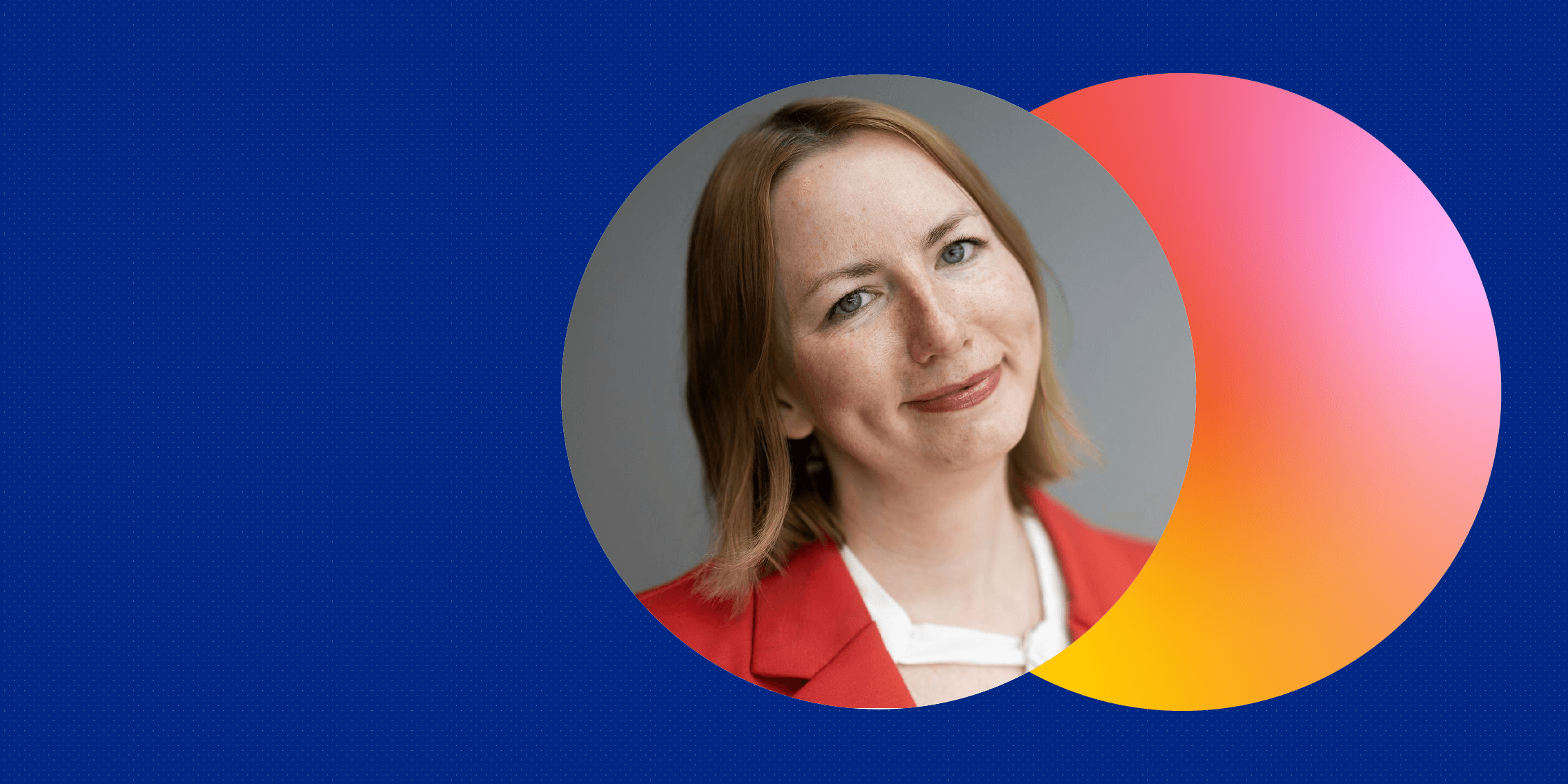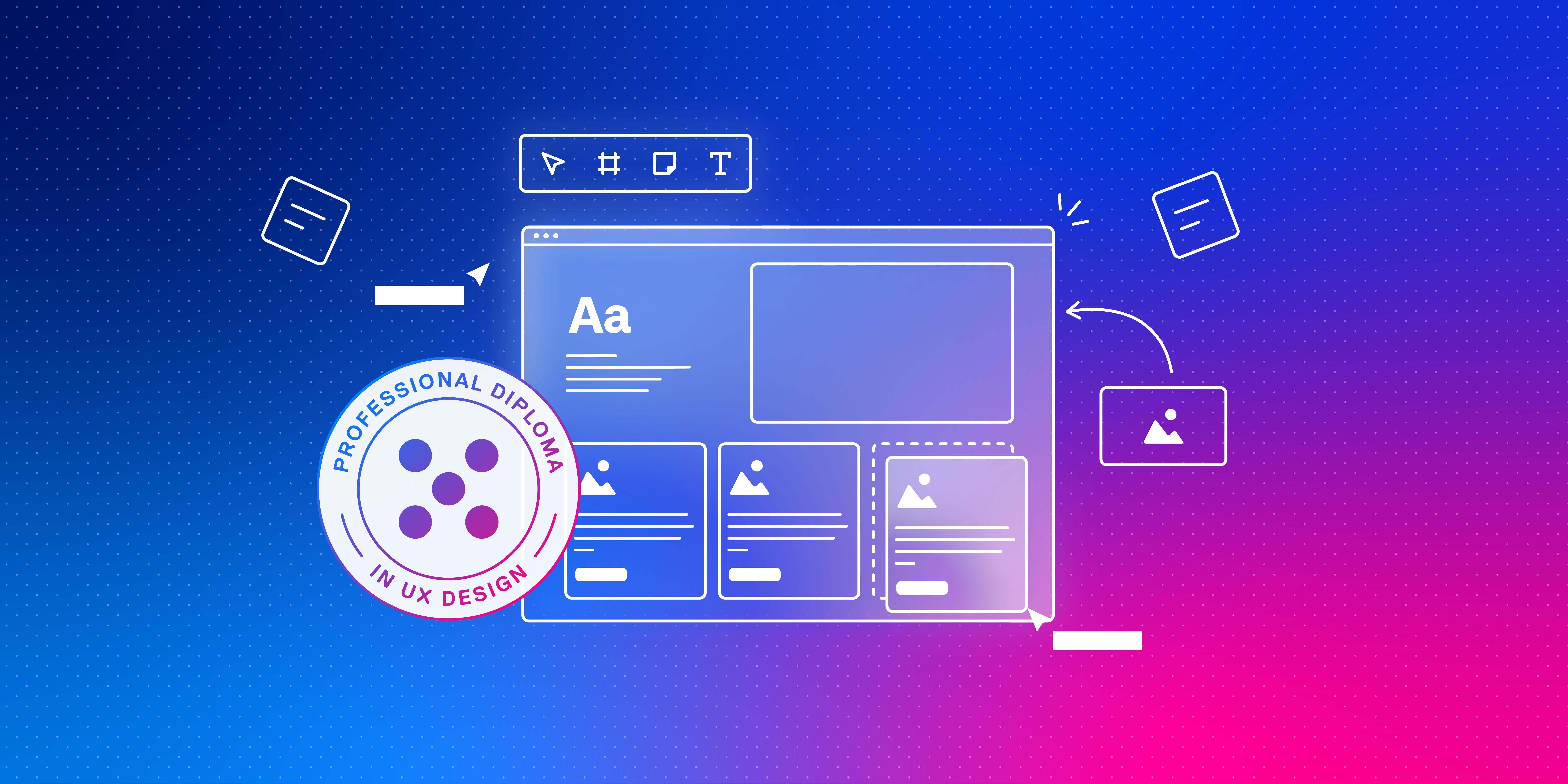Meet Luke Bracken: a UX Designer within IBM’s Data & AI division, and a recent UX Design Institute graduate.
While Luke entered the field with some prior UX experience, landing his current role with IBM marked an exciting turning point in his career. One that he credits, in part, to his studies with the UX Design Institute.
Luke’s career trajectory highlights the importance of continuous learning—and the power of a formal qualification from an industry-recognised provider.
So what inspired Luke to take a UX course? And how did it help him move forward in his career?
Let’s take a look at Luke’s journey so far.
Luke’s early career: from digital marketing to web development to UX
Luke first discovered his passion for user experience while studying Computer Science and Media Technology at university. After graduating, he worked as a digital marketing associate and then as a junior web developer before taking on his first UX role in 2022.
Working as a UX/UI designer at Elavon Europe, a fintech company in Dublin, Luke gained first-hand exposure to fundamental UX skills and concepts such as design thinking, research, and prototyping.
Even so, he still felt like a beginner in UX with much to learn. Eager to deepen his expertise and boost his confidence, Luke enrolled in a UX design course.
He explains:
I had experience in UX throughout university and through lots of smaller online courses. But I wanted something really thorough that would go through each stage of design all in one place.
After researching multiple courses, Luke decided to study with the UX Design Institute.
Why the UX Design Institute? The importance of flexibility and a university-endorsed qualification
Luke was already working full-time, so he needed a program that he could take flexibly. Having anytime access to the course materials and being able to learn at his own pace was a game-changer:
The fact that you could do the diploma in your own time was huge for me. I was already working as a UX/UI designer, but having the flexibility to learn at my own pace was really important; it helped me balance it with my job.
He adds, “I took full advantage of the year of access and made it my goal to go slowly and absorb the material. I took loads of notes and kept the PDF notes provided for each module so I could go back and review them. I even rewatched some of the videos a few times. Being able to learn at my own pace made it all possible.”
Another major priority was course quality and credibility. Looking beyond the program itself, Luke wanted to make sure that his qualifications would be recognised by employers and help him progress in his career.
For me, it came down to two things: university accreditation and comprehensiveness. A lot of courses offer credentials, but the Professional Diploma in UX Design is backed by a university, which is important to hiring managers.
The course is also comprehensive; it covers everything from start to finish in a linear flow. You have access to the materials for a year and you’re building your portfolio project throughout. It was a no-brainer for me. As someone so junior, I really needed that knowledge to take the next step in UX design.
As Luke mentions, the Professional Diploma in UX Design is credit-rated by Glasgow Caledonian University. Not only does this mean that the diploma is worth a certain number of university credits; it also means that the course is rigorously audited by an external body.
This ensures that the curriculum is relevant and up-to-date, and that the overall learning experience is of a high standard.
Employers especially value this marker of quality. In a survey of over 500 UX professionals, 77% of UX hiring managers said they look for a UX-specific qualification—of which 52% look for a UX certificate or diploma.
For UX candidates, getting a diploma from a university credit-rated provider can make all the difference when it comes to standing out in the job market and landing interviews—something that Luke experienced first-hand.
How the course helped Luke take the next step in his career
Besides being university credit-rated, the structure and practical nature of the course were both instrumental in Luke’s growth as a UX designer.
The Diploma is designed so that each module introduces a new step in the UX process, helping to build your knowledge incrementally. And, by applying theory to practical projects, you’re learning in a way that truly sticks.
Luke recalls:
Having all the content in one place from the entire UX process was key to me. It meant you learnt the theory and then applied it to projects straight away before going onto the next step. Each project built upon your work in the previous projects as well, which truly helped my understanding of the theory and why we are doing this in the first place.
Completing the course with ready-made portfolio projects is a major advantage. Employers expect all UX candidates (including entry-level applicants) to have a portfolio, but getting those first case studies can be tricky. With a practical course curriculum, students have a great foundation on which to build a strong UX portfolio.
Luke recalls how the knowledge he gained and the project he completed as part of the diploma were pivotal in helping him land his next job with IBM:
The knowledge I gained, combined with the portfolio project I created, was the perfect combination for me to take the next step in my career. I have no doubt it helped me land my role as a UX designer at IBM, and I accredit most of that to the portfolio project, as that’s what shows potential employers your skills and experience in action.
Luke also benefited from career advice and portfolio reviews from experts at the UX Design Institute. This helped him feel confident that his portfolio was polished and well-structured before applying for his role at IBM.
From junior UX designer to working at IBM: a UX career going from strength to strength
Completing the Professional Diploma in UX Design was a major turning point for Luke’s career.
Prior to the course, he described himself as a junior UX designer with significant knowledge and skills gaps. Then, armed with new knowledge, practical experience, and an impressive portfolio, he had the confidence—and the credentials—to take the next step.
Just two months after finishing the diploma, Luke started a new role as a UX designer within the Data and AI division at IBM. Almost a year on, he’s thriving in his role, leveraging his expertise at one of the biggest technology companies in the world.
Luke’s success is testament to his commitment to continuous learning and growth. Despite already having some UX knowledge, he recognised how addressing his skills gaps and deepening his expertise could help level up his career.
Are you considering a UX design course? Luke’s advice for aspiring designers and upskillers
Reflecting on his journey, Luke has some invaluable advice for anyone looking to get started in UX or take the next step in their career.
First and foremost, he urges UX newcomers to embrace their transferable skills:
Don’t discount the skills you’ve acquired in previous roles, even if they seem unrelated to UX. Skills like problem-solving, empathy, and communication are highly valued in the UX field.
Second, he has some great advice for graduates who are intimidated by jobs that require years of practical experience. Rather than letting this discourage you, Luke advises a proactive approach to gaining hands-on experience:
Include projects from UX courses in your portfolio to demonstrate your understanding of the UX process. Redesign existing websites and apps to show initiative—documenting your process as you go—and look for volunteering opportunities to gain valuable real-world experience.
When it comes to acing the job search, Luke emphasises the importance of a strategic approach.
He recommends carefully reviewing each job description and adjusting your CV and portfolio to highlight the specific skills and experiences they’re looking for. At the same time, he warns against sending the same generic application to every company.
Last but not least, Luke encourages persistence and resilience throughout the job search:
Rejection is part of the job search process. Learn from each experience and continue to refine your skills and your portfolio. Keep networking and building relationships. Persistence and a positive attitude will eventually pay off.
If you’d like to hear more advice from Luke, check out this UX Career Masterclass featuring Luke as a panellist: Where the UX jobs are and how to land one. Feel free to find him on LinkedIn for more inspiration.
Level up your UX career with the UX Design Institute
If you, too, want to level up your UX design skills and take the next step in your career, consider the UX Design Institute’s Professional Diploma in UX Design. You’ll learn the UX design process from start to finish, completing practical portfolio projects and preparing to land your first UX design role or secure a promotion.
For further career inspiration and industry insights, check out the following:
- Is the UX job market oversaturated? An in-depth analysis and outlook for 2024
- Want to become a UX designer? Here’s how your ‘unrelated’ work experience will help you
- From project management to UX: Jenny Björkman’s career-change with the UX Design Institute




